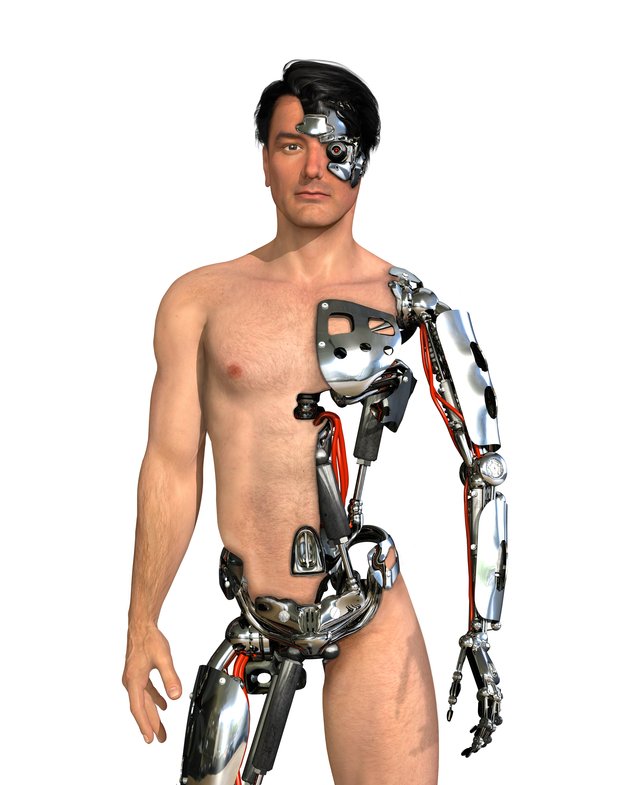The Future man
What do you think will look like in 100,000 years?
Key word here – naturalized. The upper end of human life expectancy may reach 120 years or more in the next generation. Mr. Lamm gave me a clue with his artistic rendering of future humans by hinting at large eyes to accommodate an implanted interface. In the next few decades, we will have access to a growing inventory of synthetic body parts to replace diseased or defective tissue. Being the narcissistic creatures we are, anything to enhance appearance and/or function … all the better. Only a matter of time when we become the embodiment of the bicentennial man. How much biology would future man sacrifice to achieve added longevity? You don’t have to look forward a 100,000 years to see the potential for mankind to be more synthetic than organic living tissue.
The evolution of large eyes was loosely hypothesized to accommodate a marriage of technology in the human body, where those dazzling peepers become more IPAD than I-See. A novel thought, though I question the need for the increased size, or the involvement of an eyeball at all. I can’t imagine what a hundred millennia will have as technology, but if we’re still here or haven’t knocked ourselves back to our Neanderthalic roots, I’m guessing communicative and sensual input/output will be nanoscopically hardwired in the brain and nervous system.My concept of naturalized human evolution comes in three parts; the near term result of a global community without borders, potential midterm impacts of the environment, and long term disappearance of vestigial parts. Our diversity comes from the remnants of isolated human communities. If our environment remains fundamentally unchanged, in a thousand years, human hybridization might yield a taller individual, olive complexion, with a hint of Asiatic features. Sharp changes in the environment could change all that. Examples that come to mind; skin changes to withstand increased UV radiation, nasal/esophageal alterations required for higher concentrations of CO2, hydrocarbons. I have nothing to base that on other than my own fertile imagination, but it has a certain sense to it. Long term? Evolution, if left to its own devices, has a way of pushing forward attributes needed, and suppressing attributes we don’t. Think appendix, except over thousands of years, the list might include fingernails, hair, pigmentation; certain muscle groups … you get the idea.

Hi! I am a robot. I just upvoted you! I found similar content that readers might be interested in:
http://aponteliterary.com/great-post-by-d-t-krippene/